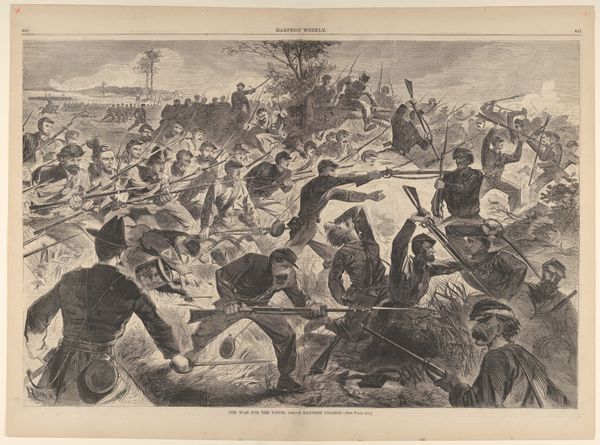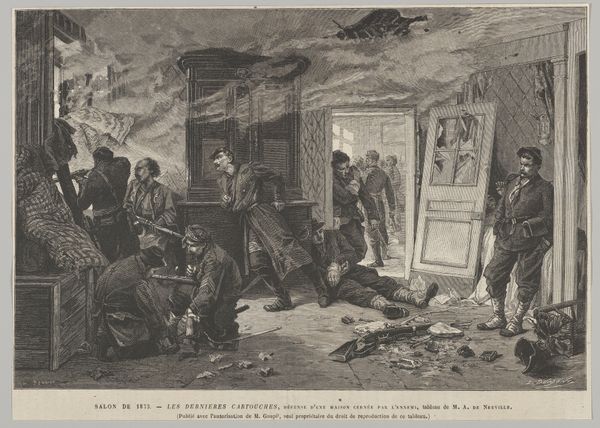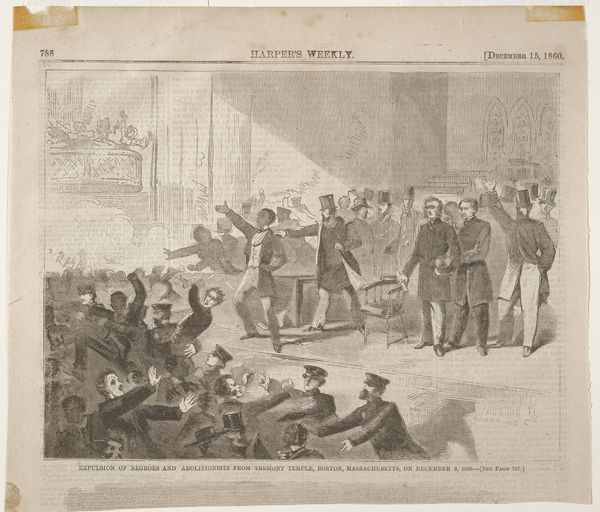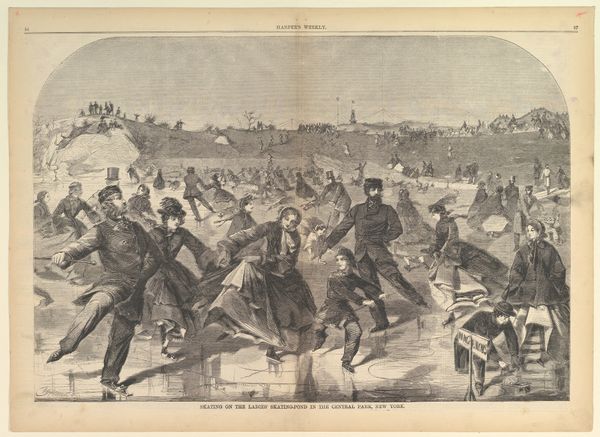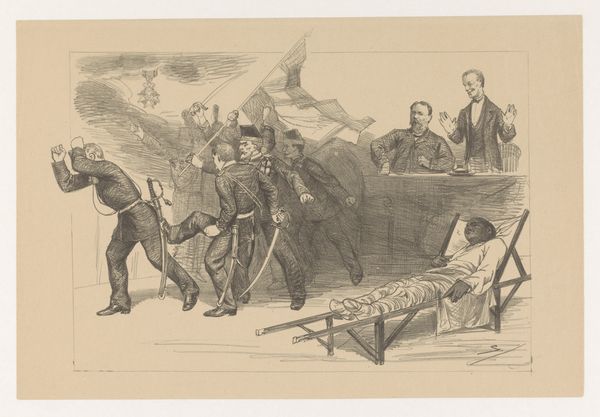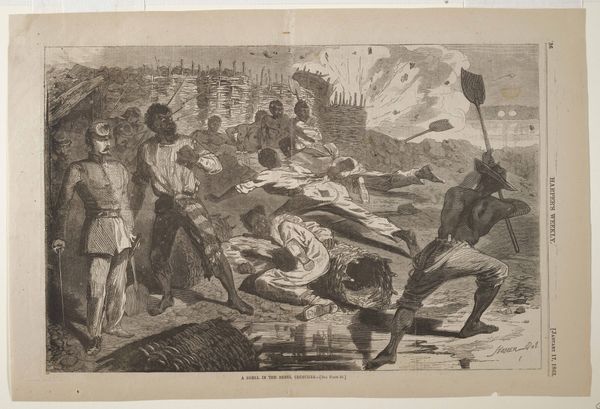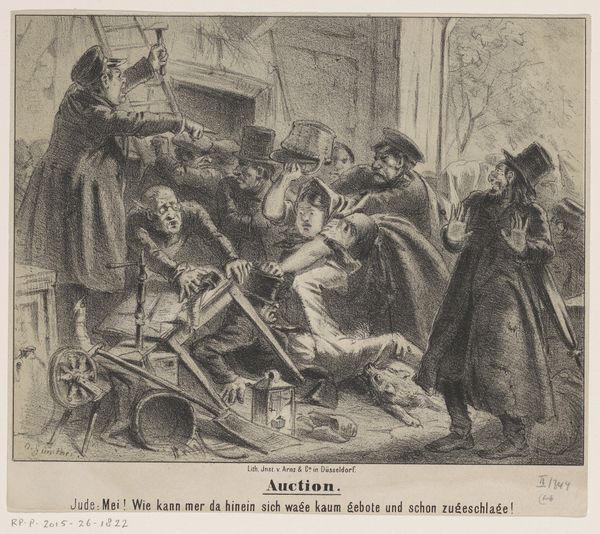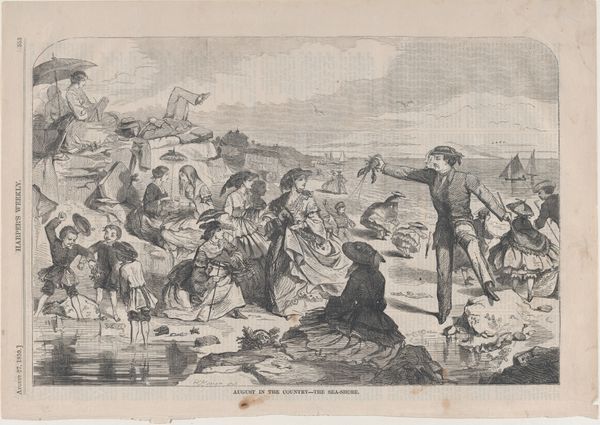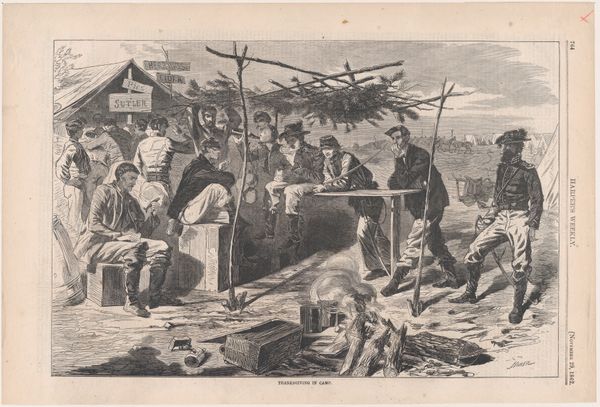
The Surgeon at Work at the Rear During an Engagement (from "Harper's Weekly," Vol. VII) 1862
0:00
0:00
Dimensions: image: 9 1/8 x 13 3/4 in. (23.2 x 34.9 cm) sheet: 10 11/16 x 15 3/4 in. (27.2 x 40 cm)
Copyright: Public Domain
Editor: So, here we have Winslow Homer's "The Surgeon at Work at the Rear During an Engagement," made in 1862, it seems to be a print, using etching and pencil. It's incredibly detailed, almost painfully so. I am curious to understand your interpretation of this historical scene depicted? Curator: This print provides a potent insight into the realities of war, specifically through its depiction of labor and materiality. The starkness of the etching technique and the mass-produced nature of Harper's Weekly, where this appeared, place it firmly within a conversation about the distribution and consumption of images, particularly concerning wartime experience. What does the scene suggest about the process of portraying suffering at the time? Editor: Well, the level of detail suggests an effort at realism, but the fact that it's a print also creates distance. It’s a mass-produced image of a very individual experience of suffering, consumed by the masses. Curator: Exactly! Consider the labor involved: Homer’s initial sketches, the etcher's work to translate that into a reproducible plate, and the printers churning out copies for consumption. The materiality of the print itself – paper, ink, the etching plate – are all elements in shaping our understanding of war. Think of the social context: How does the availability of these images impact public opinion about the Civil War? How do such works relate to ideas about battlefield medicine and its perceived effectiveness or lack thereof? Editor: So, the image itself isn't just a depiction of a scene, it's a product of labor, intended for mass consumption. And the choice of medium directly influences the viewer's perception. Curator: Precisely. The act of reproduction transforms an intimate moment of suffering into a commodity, influencing both our understanding of war and our relationship to it. It's about the intersection of labor, materials, and their social and cultural impact. Editor: That definitely shifts my perspective. I hadn’t considered how the very act of creating and distributing this image shapes its meaning so profoundly. Thank you.
Comments
No comments
Be the first to comment and join the conversation on the ultimate creative platform.

